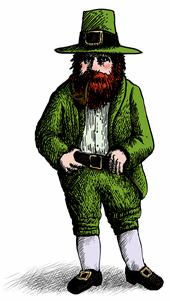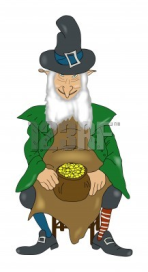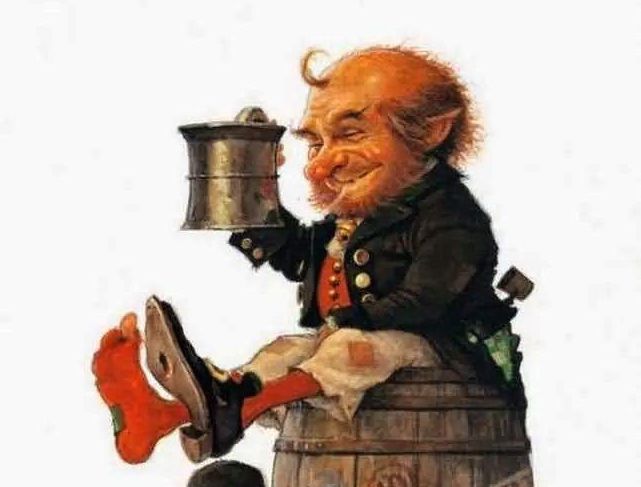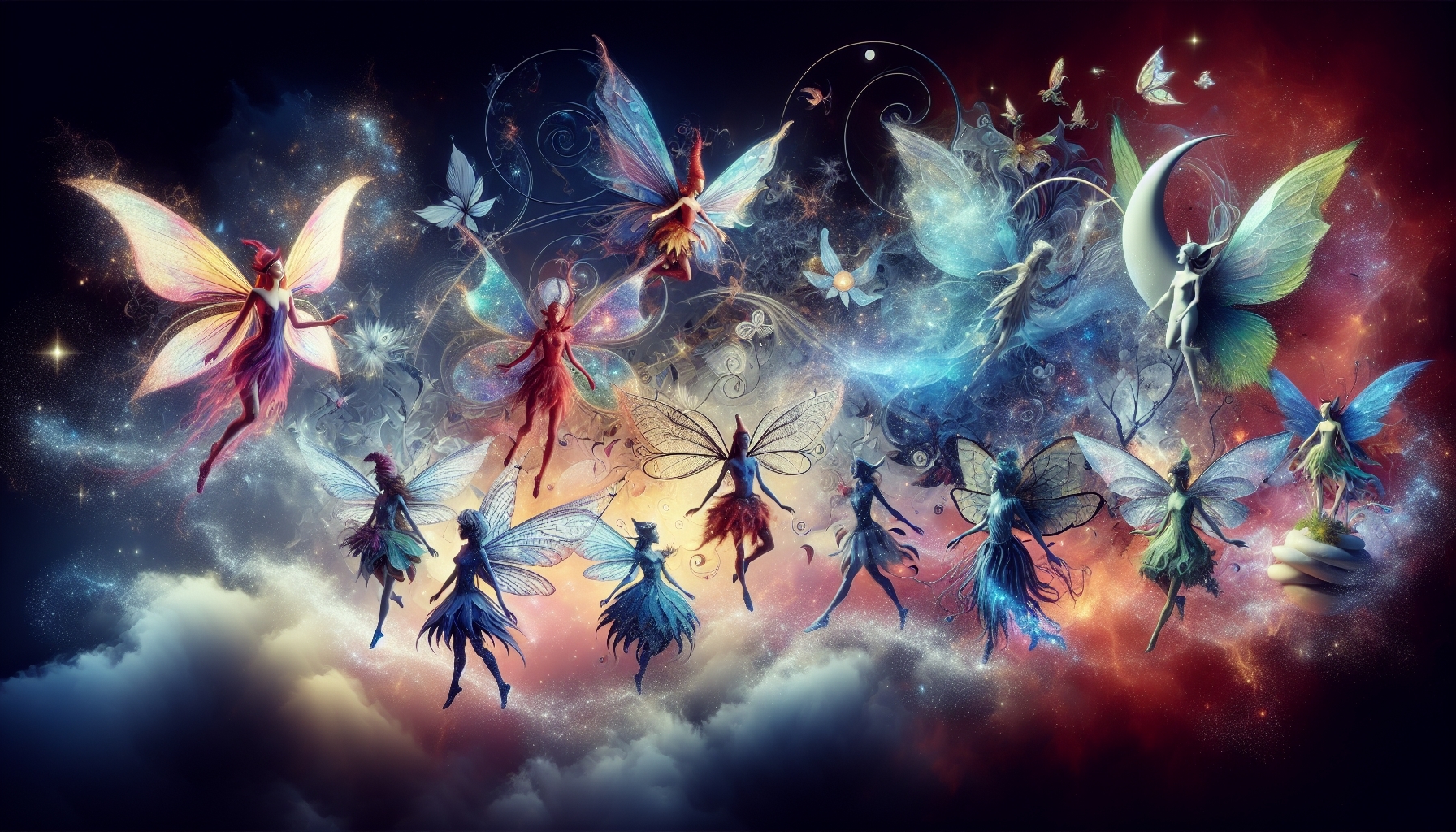Leprechaun Origins
- Echtra Fergus mac Léti Here is the first mention of Leprechaun Origins.
- "The earliest known story of leprechauns, appears in the medieval tale known as the Echtra Fergus mac Léti ('Adventure of Fergus son of Léti '). The text contains an event in which Fergus mac Léti, King of Ulster, falls asleep on the beach and wakes to find himself being dragged into the sea by three lúchorpáin. (an Old Irish term thought to be where the modern term "leprechaun" comes from.)" Leprechaun - Wikipedia
The leprechaun origins are part of Irish folklore and mythology. Its origins are somewhat murky and come from tales that were told many centuries ago.
One of the earliest references to a leprechaun-like creature comes from the medieval tale "Adventure of Fergus son of Léti," where Fergus, the King of Ulster, is dragged into the sea by three lúchorpáin,
The leprechaun is thought to be related to the clurichaun and the far darrig in Irish folklore, and all three are often confused because of their similar appearances and habits. The clurichaun is typically depicted as a night-time creature, prone to drunkenness and mischief, while the far darrig is known for its red coat and its penchant for gruesome practical jokes.

Leprechaun origins, The modern image is wearing a green suit and hat, cobbling shoes, and guarding a pot of gold—is a relatively recent invention, popularized during the 19th and 20th centuries. This image has been proliferated by various forms of media, St. Patrick's Day celebrations, and Irish tourism.
In terms of etymology, there are several theories about the origin of the word "leprechaun." Some linguists believe it derives from the Irish term 'leipreachán,' which is itself a diminutive of 'leithbrágan,' meaning 'half shoe,' referring to the leprechaun's occupation as a shoemaker. Another theory is that it comes from 'luacharma'n,' meaning 'pygmy' or 'sprite.' The most widely accepted theory is that it derives from 'luchorpán,' meaning 'small-bodied fellow.'
Despite their origins in Irish folklore, leprechauns have become a global symbol of Irish culture, and their mythology continues to captivate people worldwide.
More About Leprechaun Origins

The Aos Sí, the supernatural race in Irish mythology is considered to be the source of leprechaun, clurichaun, and Far Darrig. They all originate from the same Irish folklore.
The term "Aos Sí" (also spelled "Aes Sídhe") is part of Irish and Scottish mythology and folklore. The phrase translates to "people of the mounds" or "people of peace" and refers to a supernatural race of beings comparable to the fairies or elves in other traditions.
The Aos Sí are often associated with the ancient burial mounds found throughout Ireland and Scotland, which are known as "sídhe" in Irish. These mounds were thought to be the entrances to the otherworldly homes of the Aos Sí.
Leprechaun is a renowned figure in Irish mythology and folklore, considered a type of faerie. They are typically portrayed as small, male creatures, often associated with professions like shoemaking.
The leprechaun is a part of a broader tapestry of Irish mythology that includes other magical beings such as banshees, selkies, and púcas. These stories and characters are part of the ancient oral tradition of Ireland, which has been passed down through generations.
As you mentioned, some legends suggest that before the arrival of the Celts, Ireland was inhabited by a race of small-statured people who later became incorporated into Irish mythology as faeries, or the "Aos Sí." Over time, these stories evolved and adapted, and the leprechaun emerged as a distinct character in this mythological tradition.
Leprechauns have been described in various ways throughout the centuries, but the general image is of a small, elderly man dressed in green or red, who partakes in mischief, and is particularly adept at evading capture. They are often depicted as solitary creatures who spend their time making shoes and hiding their pots of gold at the end of rainbows.
While these tales are a rich part of Irish culture and history, it's important to remember that they are, in fact, myths and legends. There's no evidence to support the existence of leprechauns or other mythical creatures. However, these stories continue to captivate imaginations worldwide, and they are a testament to the power of storytelling and cultural tradition.

The clurichaun is another mythical creature from Irish folklore, often confused with the leprechaun. Like the leprechaun, clurichauns are depicted as small, elf-like beings, but there are some key differences that set them apart.
Clurichauns are typically associated with a love for drinking and are often depicted as perpetually drunk. They are said to inhabit wine cellars and spend their nights drinking, singing, and causing mischief. Unlike the industrious leprechauns, clurichauns do not have jobs and are known for their debauchery rather than their work ethic.
The Far Darrig, which translates to "Red Man" in Irish, is another creature from Irish folklore. They are part of the Aos Sí, a supernatural race in Irish mythology comparable to the fairies or elves of other traditions.
Far Darrigs are known for their distinctive red coats and caps, from which they derive their name. They are often portrayed as being mischievous, even malevolent, and are particularly known for their love of practical jokes and pranks. However, their pranks can be quite dark and may involve terrifying or even harming their victims, distinguishing them from the more benign trickery often associated with leprechauns.
While each of these creatures has its own distinct characteristics and behaviors, they share common themes. All three are known for their mischief and trickery, reflecting the belief in a supernatural world that operates by its own rules but can interact with the human world in unexpected and often disruptive ways. They also all represent different aspects of Irish culture and society, from the importance of craftsmanship (the leprechaun as a shoemaker) to social critique (the clurichaun as a symbol of overindulgence).
Finally, the existence of these creatures in Irish folklore shows the richness and depth of Irish mythology and its enduring influence on Irish culture and identity. They are part of a shared cultural heritage that continues to be celebrated and explored in literature, art, and popular culture.

